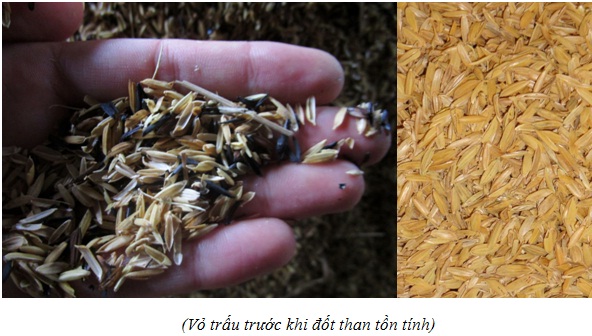

Rice husks account for 20 percent of rice grains. This means that 9 million tons of rice husks are discharged into the environment, a huge volume of waste which, if not treated, will cause pollution.
Rice husks are difficult to recycle, and a kind of refractory material, difficult to decay in the environment. In Vietnam, and mostly used as fuel to burn. In the last few years, it has been processed into firewood or plywood sheets for interior decoration.
However, the volume of rice husks used for these purposes remains modest compared with the huge volume of rice husks discharged into the environment every year.
Scientists once thought of burning rice husks to generate electricity. However, the plan was not feasible because of low economic efficiency. They tried to use rice husk for biomass furnaces but the demand is low in Mekong Delta, where there is not much industry.
|
Vietnam produces more than 40 million tons of unhusked rice a year, and In 2015 alone, the rice output was 44.7 million tons. |
Scientists found that rice husks contain 15-17 percent SiO2. If burnt in normal conditions, the SiO2 content will be not high. They have discovered the pyrolysis method under which rice husks are burned in special furnaces at special temperatures so as to collect rice husk ash with high SiO2 content, at over 90 percent.
Silica can be used for many purposes - refining silicon for making solar cells and semiconductors; making liquid glass, utilized in material fabrication; making an additive for high-quality automobile tires. It can be used to make heat-resistant paints, bricks, detergent and toothpaste, and used as additive in food industry, in making cement and concrete.
In agriculture, it is used to make fertilizer that helps improve rice yield by 15-30 percent, thus minimizing the use of pesticide.
As it can be used widely in many fields, the demand for SiO2 has been increasing rapidly in the world market. It is estimated that 1.5 million tons are consumed every year.
The husk pyrolysis technology creates two types of products – SiO2 and calories. The technology, invented by Russian scientists, also allows it to turn to straw and other kinds of waste from rice fields into SiO2.
Do Dinh Khang, a scientist from the Vietnam Academy of Science & Technology, said he wants to see technology to be applied in Vietnam’s Red River and Mekong River Deltas, because this will help increase the added value of Vietnam’s rice.